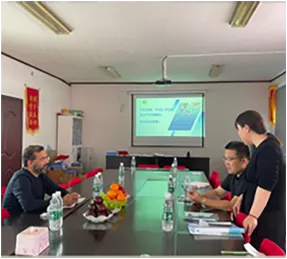Packaging Solutions for Juice in Recyclable Plastic Bottles
The Role of Plastic Bottles in Juice Packaging
In the modern world, packaging plays a crucial role in how products reach consumers, and this is particularly true for beverages like juice. Among various packaging options available, plastic bottles have gained popularity as a preferred choice for juice packaging. This article explores the significance of plastic bottles in the juice industry, their benefits, and the emerging trends in sustainability.
Advantages of Plastic Bottles
One of the primary advantages of plastic bottles in juice packaging is their lightweight nature. Unlike glass bottles, which can be heavy and fragile, plastic bottles are easy to transport and handle. This reduces transportation costs and energy consumption during distribution. Additionally, lightweight packaging minimizes the risk of breakage, ensuring that products reach consumers without damage.
The durability of plastic bottles is another key factor that makes them suitable for juice packaging. They are resistant to shattering and can withstand varying temperatures, making them ideal for both refrigerated and room temperature juices. This versatility allows manufacturers to cater to a broad range of consumer preferences, from fresh-squeezed juices to shelf-stable varieties.
Moreover, plastic bottles are highly customizable. They can be molded into various shapes, sizes, and colors, providing brands the opportunity to create unique and eye-catching packaging designs that reflect their identity. This aesthetic appeal not only attracts consumers but also plays a role in brand recognition.
Barrier Properties
Juices are sensitive products that can be affected by factors such as light, air, and temperature. Plastic bottles, particularly those made from high-density polyethylene (HDPE) or polyethylene terephthalate (PET), offer excellent barrier properties. These materials help preserve the quality, freshness, and taste of the juice for an extended period. By preventing oxygen infiltration and light exposure, plastic bottles can extend the shelf life of beverages, providing consumers with a better experience.
Cost-Effectiveness
plastic bottles for juice packaging

From the manufacturer’s perspective, plastic bottles are cost-effective. The production process for plastic bottles is generally less expensive compared to glass or metal packaging. This cost saving can be passed on to consumers, making juices more affordable. Additionally, the lightweight nature of plastic reduces shipping costs, contributing to a more economical supply chain.
Environmental Considerations
Despite their advantages, plastic bottles have faced criticism for their environmental impact. The proliferation of single-use plastics has raised concerns over pollution and waste. However, the juice industry is evolving to address these issues. Many manufacturers are now adopting sustainable practices, including using recycled PET (rPET) material in their bottles. These bottles are made from recycled plastic, which significantly reduces the amount of new plastic needed and lessens the environmental footprint.
The rise of circular economy principles is also influencing juice packaging. Companies are increasingly encouraging consumers to recycle their plastic bottles by providing easily accessible collection points or incentivizing returns. Furthermore, innovations in biodegradable plastics and plant-based packaging materials offer promising alternatives that can maintain the benefits of traditional plastic while reducing environmental impact.
Consumer Preferences
As consumers become more environmentally conscious, their preferences are shifting towards sustainable packaging solutions. Brands that prioritize eco-friendly practices in their packaging are likely to attract a loyal customer base. In response, juice brands are investing in research and development to create greener packaging options without compromising on quality and safety. This trend demonstrates that the juice industry is not only adapting to market demands but also taking responsibility for its environmental impact.
Conclusion
Plastic bottles are a vital component of juice packaging, offering numerous benefits from durability and cost-effectiveness to excellent barrier properties. While challenges related to environmental sustainability persist, the industry is making strides toward adopting greener practices and materials. As consumer demand for sustainable solutions grows, it is clear that the future of juice packaging will involve a blend of convenience, safety, and environmental responsibility. By embracing these changes, the juice industry can continue to thrive while contributing positively to the planet.
-
Aesthetic Makeup Spray Bottles | Fine Mist Empty RefillableNewsAug.19,2025
-
White Plastic Veterinary Vaccine Vials | Lab Liquid BottlesNewsAug.18,2025
-
Plastic Medicine Liquid Bottle: Secure Flip Top Drug VialsNewsAug.17,2025
-
Durable 250ml Blue Plastic Vaccine Vial for Lab & Vet UseNewsAug.16,2025
-
Sterile Virus Sample Tubes: Secure & Reliable Specimen CollectionNewsAug.15,2025
-
White 250ml Plastic Vaccine Vial for Lab & Vet MedicineNewsAug.14,2025
























